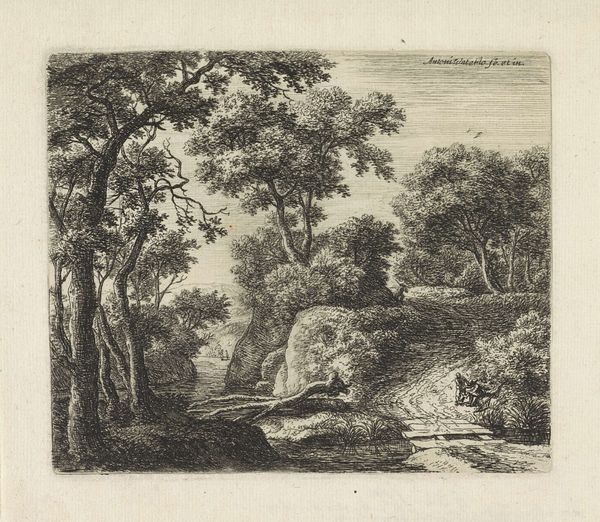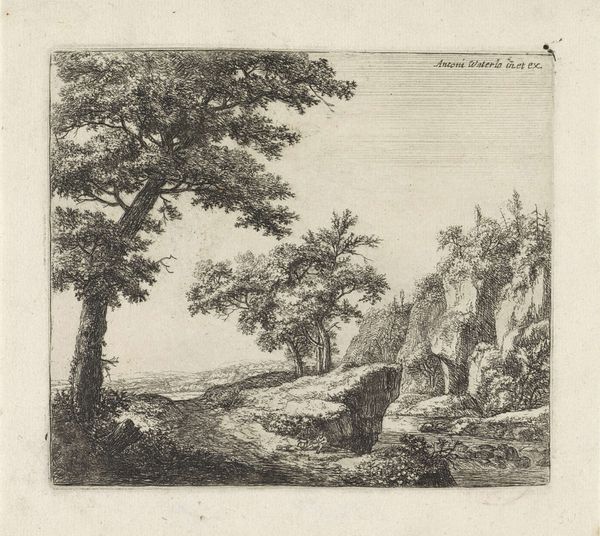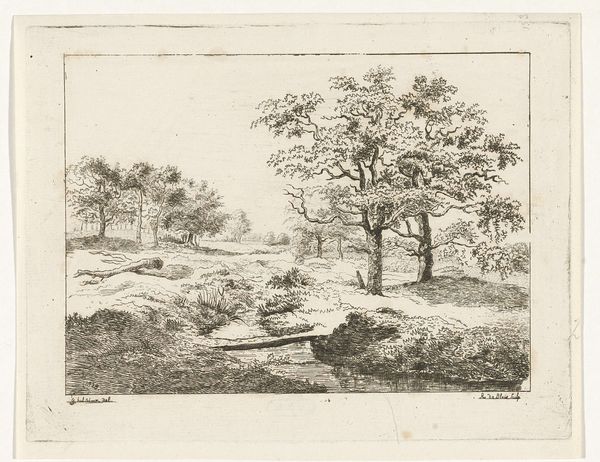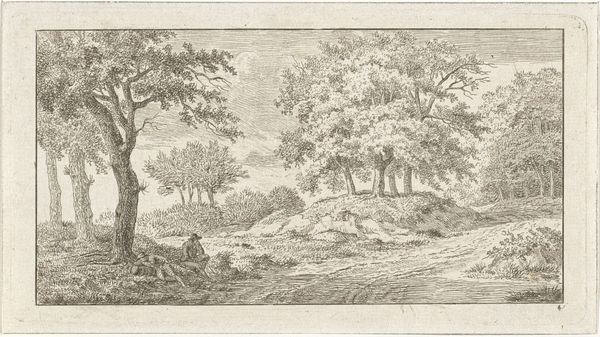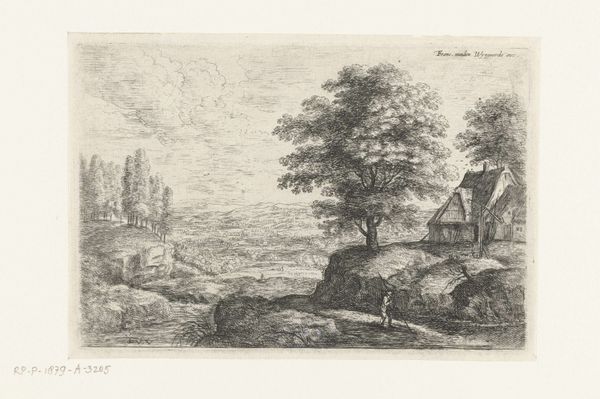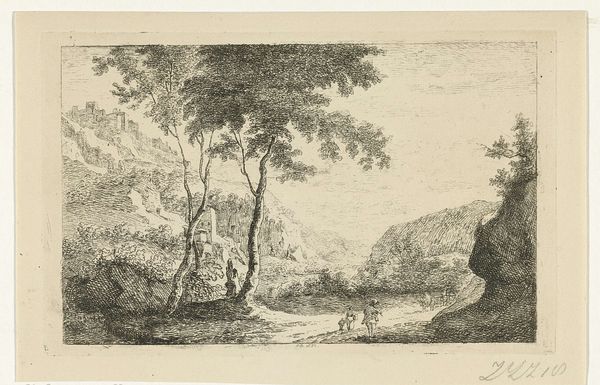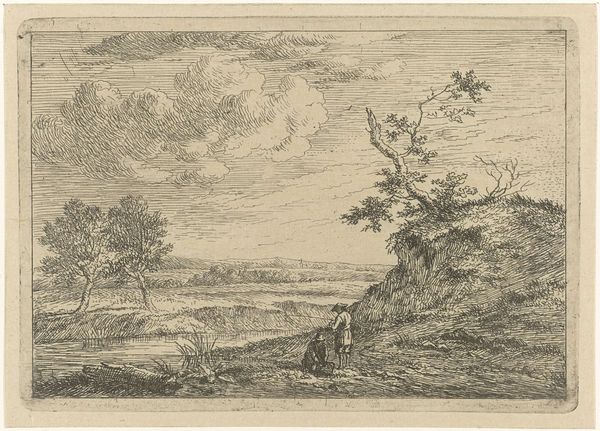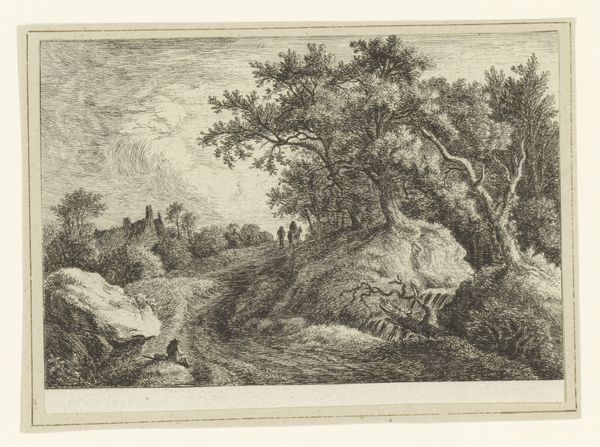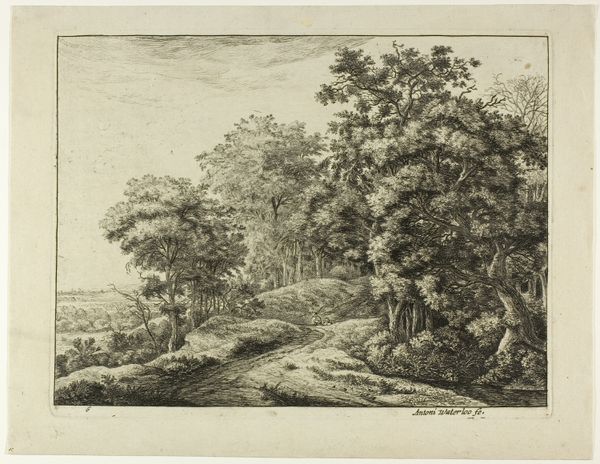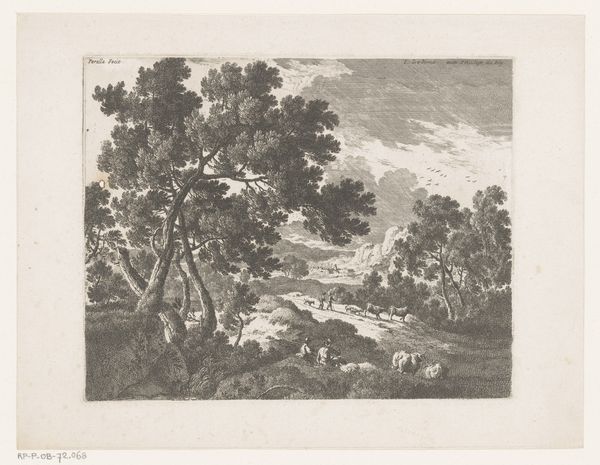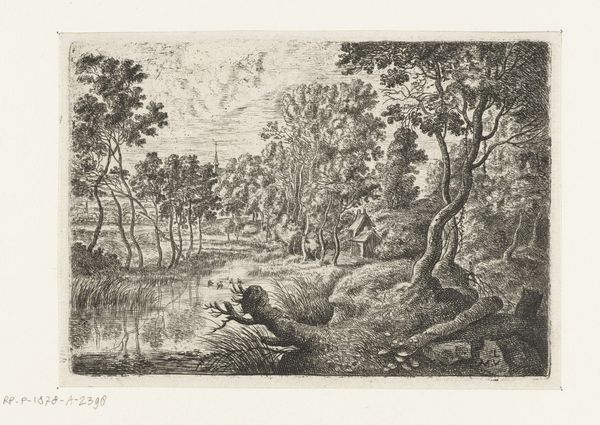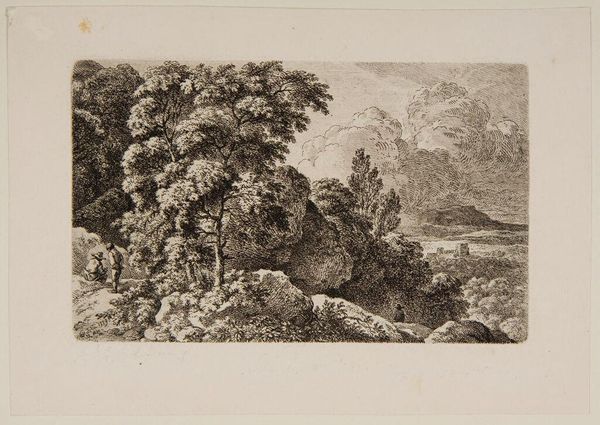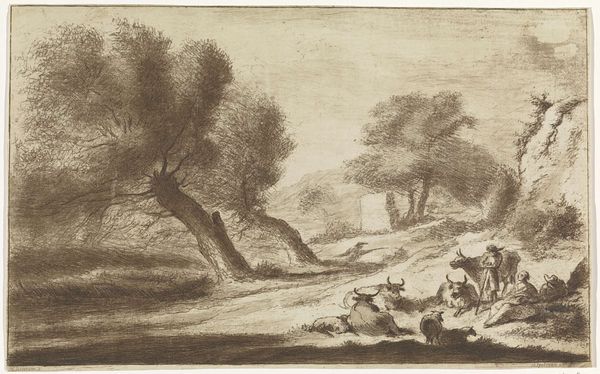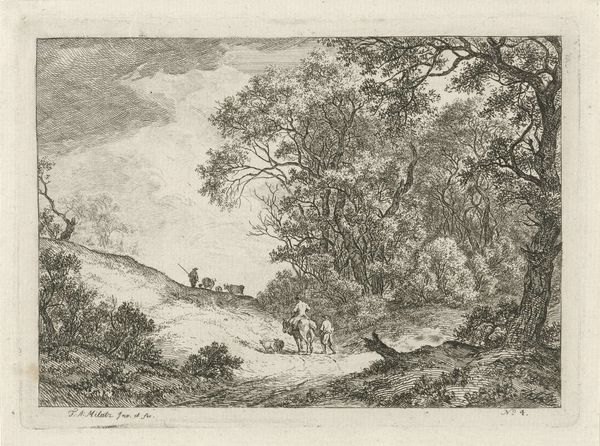
print, etching
# print
#
etching
#
landscape
#
waterfall
#
etching
#
romanticism
Dimensions: height 108 mm, width 141 mm
Copyright: Rijks Museum: Open Domain
This print, "Bridge at a Waterfall," was made by Reinierus Albertus Ludovicus baron van Isendoorn à Blois, using etching, a process of printing from a metal plate. The crisp lines you see are the result of careful work with acid. First, the artist would have coated a metal plate with a waxy substance, then scratched away lines to expose the metal beneath. Dipping the plate in acid would then bite into these exposed lines, creating grooves that hold ink. The printmaker then applies ink to the plate, wipes the surface clean, and uses a press to transfer the ink from the etched lines onto paper. While seemingly simple, the technique requires immense skill, controlling the depth of the lines through timing the acid bath, and also creating a strong composition. Van Isendoorn à Blois has created depth and detail in this landscape, skillfully capturing the scene’s texture and light. Appreciating the processes involved allows us to understand that there’s more to this artwork than just a pretty picture.
Comments
No comments
Be the first to comment and join the conversation on the ultimate creative platform.
